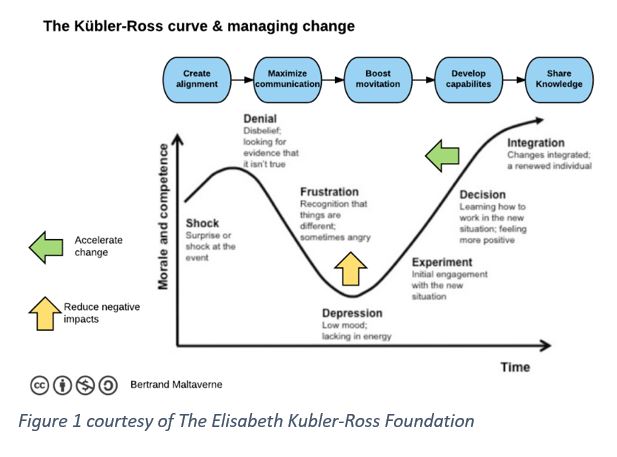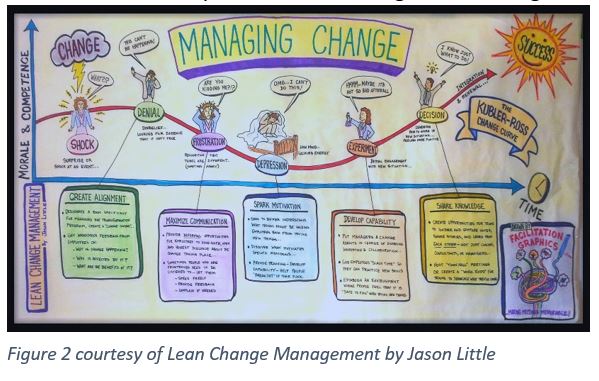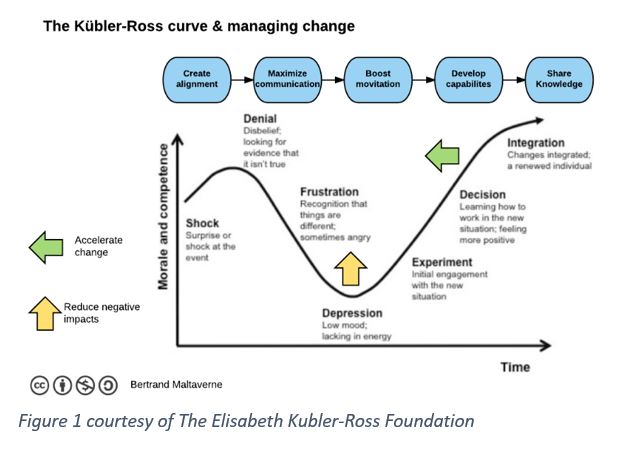Michael’s expertise is in analysis, positioning, and strategy development for companies facing transformational market drivers. At ARC, he applies his expertise to developments related to Industrial Internet of Things (IIoT) and advanced analytics, including machine learning.
COVID-19 Industry Disruption Shows Why Revised Goal Setting Is Crucial
Blog: NASSCOM Official Blog
So, here we all sit at home, hunkering down as we wait out COVID-19 industry disruption. Of course, that’s a little simplistic, the front-line healthcare professional and service folks – grocery stores, municipal workers, food, construction, etc. – are still hard at work keeping us healthy, fed, and safe. Shout out to all of you. Back to the immediate subject, though—this is what industry disruption looks like. Sure, there are more common instances of competitive industry disruption that we are used to and can understand more readily, but this is it at its most stark—sudden and total industry disruption.
As I mentioned in a prior post, each industry disruption event grows the gap between those that have taken steps to transform their business and those that have taken few or tepid steps to rethink their businesses. The greater the disruption, the wider the gap. In looking at COVID-19 industry disruption, those same leaders also seem to be undertaking a similar step. Leaders in digital transformation have clearly understood that when faced with industrial disruption of this magnitude, revised goal setting in the face of change is critical.
I was recently speaking with Jonathan Matthews, Head of R2 Data Labs Operations (Job Share) and Head of Delivery Ecosystem within Rolls-Royce. I can always count on Jonathan for thought-provoking discussion when it comes to digital transformation. He and I were chatting about a discussion he will help lead during the next Digital Transformation Council monthly online meeting on April 14, 11 AM EDT. During our chat, he was sharing the progress Rolls Royce, like most every other industrial company, was making in moving a massive amount of personnel from the office to work from home, in response to COVID-19 industry disruption. Naturally, we spent a good deal of time talking about that shift and the new work environment.
Jonathan was right in the middle of crafting plans for that shift and its aftermath, calculating all the variables  he would need to consider and how the team would respond and succeed in this new work world. In fact, he is revisiting the Kübler-Ross curve, using it to work through the organizational reaction to the industrial disruption Rolls Royce, and companies like it, are suddenly confronted with.
he would need to consider and how the team would respond and succeed in this new work world. In fact, he is revisiting the Kübler-Ross curve, using it to work through the organizational reaction to the industrial disruption Rolls Royce, and companies like it, are suddenly confronted with.
It seems Rolls-Royce understood the immensity of COVID-19 industry disruption, as company leaders quickly moved to begin contingency planning. While that’s expected of all companies, particularly resource-crucial manufacturers, Jonathan and I spent most of our time talking about the impact of COVID-19 industry disruption on people and teams.
Jonathan’s main concern was looking at the Kübler-Ross curve in terms of how to mitigate and manage the negative effects of COVID-19 industry disruption on workforce competence and organizational morale. As he rethought the stages of the change curve, Jonathan was also enlisting the principles of Jason Little, as outlined in his book Lean Change Management: Innovative Practices for Managing Organizational Change. His concern was applying action—alignment, communication, motivation, capability development, and knowledge sharing—to the phases of the change management curve.
 COVID-19 industry disruption is an exercise in change management, amplified by being instantaneous and with no clearly definable end in sight. All the negative factors associated with the change management—shock, denial, frustration, and depression—are present but also occur quickly. However, there is little-to-no-time to smoothly leverage the disciplines and processes needed to proactively meet the organizational disruption.
COVID-19 industry disruption is an exercise in change management, amplified by being instantaneous and with no clearly definable end in sight. All the negative factors associated with the change management—shock, denial, frustration, and depression—are present but also occur quickly. However, there is little-to-no-time to smoothly leverage the disciplines and processes needed to proactively meet the organizational disruption.
In these rare situations, companies that have put in the time, learned what they needed to, and pushed themselves to transform are able to better navigate the disruption. They understand that the goals they had originally set out to achieve need to be re-filtered. In other words, they quickly rethink what business-as-usual looks like when business is unusual.
Some of the goals will remain the same, others will shift slightly, and even more will be radically reinvented or even discarded. Regardless, they are more able to quickly align their workforce to these revised goals and then motivate them toward success. Instead of floundering by trying to execute to a no-longer-viable plan, transformed companies more quickly adapt, communicate achievable goals to the workforce, and galvanize the organization toward high-value outcomes, even if they are more tactical in nature for the short term.
Why can they do so much better than the rest? The difference is that they have internalized within the organization some key tenets: they have relentlessly accrued the digital wisdom needed to create an agile operation, they have then used data and technology as key means for discovering and sustaining innovation, and so their culture is more attuned to the need and benefit of transformation.
In one example, a major manufacturer (not Rolls-Royce in this instance) was planning to distribute its most valuable subject matter experts (SMEs) away from plants and into a consolidated, centralized group to support multiple plants more effectively. Because this company had already undergone substantial transformation, this group of SMEs was already used to more agile ways of problem solving. Core disciplines, such as analytics, and their supporting technologies were established and common. The company looked at COVID-19 industry disruption as an accelerant for achieving its objective. The new goals focused on revising existing workflows faster to more quickly establish the distributed SME team.
As you come to grips with COVID-19 industry disruption, ask yourself if you’ve rethought your goals. If you manage others, have you formally revisited with your people what business goals and success look like when business is unusual? Or, are you still just scrambling around trying to figure out how often you need to be in touch with your now-very-socially-distant team and colleagues? Revisit goals through the lens of this current industry disruption to help refocus the team. That’s what good companies and good leaders do.
“Reprinted with permission, original blog was posted here”. You may also visit here for more such insights on the digital transformation of industry.
About ARC Advisory Group (www.arcweb.com): Founded in 1986, ARC Advisory Group is a Boston based leading technology research and advisory firm for industry and infrastructure.
For further information or to provide feedback on this article, please contact RPaira@arcweb.com
About the Author:
The post COVID-19 Industry Disruption Shows Why Revised Goal Setting Is Crucial appeared first on NASSCOM Community |The Official Community of Indian IT Industry| :)).
Leave a Comment
You must be logged in to post a comment.








